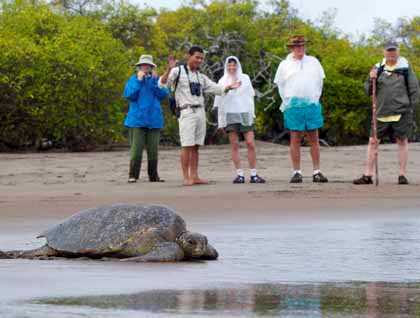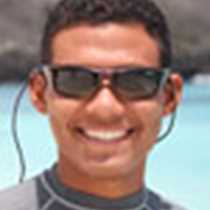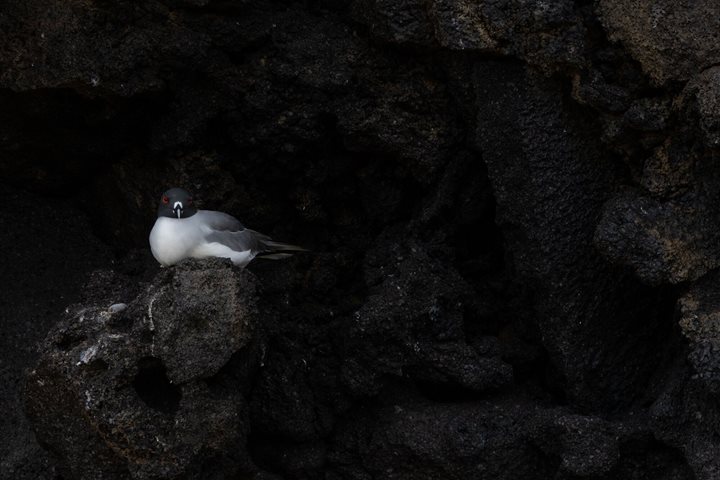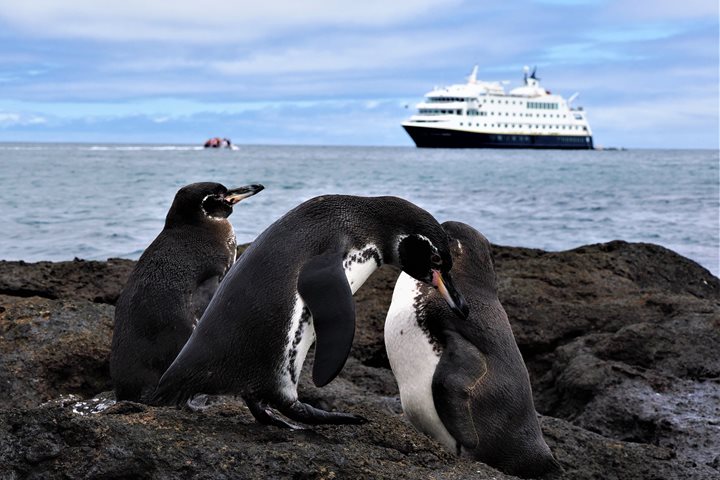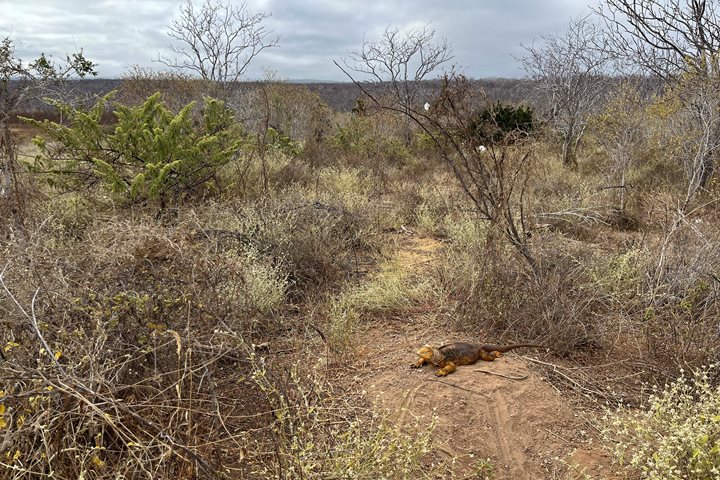Continuing with the voyage around the Galapagos Islands we crossed the equatorial line south-north and north-south to the last island Charles Darwin set foot on, San Salvador or, locally, Santiago.
Espumilla is the Spanish translation for the foam created when the waves break at the beach, and the name of the place we visited during the morning. This sandy place attracts an incredible result of evolution. The Pacific green sea turtle came to leave its precious eggs, as they normally do during the breeding season. So going early in the morning before breakfast is the best idea to see if some are still working hard. Our guests were more than marveled when we found one turtle that just finished nesting and was now making its way back to the ocean for a vacation.
Unfortunately the turtle did not bring good weather, because after Espumilla Beach we set sail to Buccaneer Cove and the shoreline conditions were not calm enough for any activity, so we waited until it was good enough for a Zodiac ride. The rocks formations and the number of birds we found really rewarded the wait.
Later we got some lunch and moved again to another spot, Puerto Egas or James Bay. This visitor site offers some beautiful explosive formations like lava tunnels that later collapsed, layers of compacted volcanic ash and more. Many years ago in the Galapagos waters, sailors came for our whales and some fur seals, the latter almost became extinct just because of its warm and protective fur. But they could use some of the lava tunnels as shelter and now numbers are better. During the walk we enjoyed, we could confirm it. Herons, sally light foot crabs and more sea birds decorated the landscape so we could have a great time after all!
That was quite a day on Santiago Island, full of wildlife and weather that kept our high expectations fulfilled, as always.

